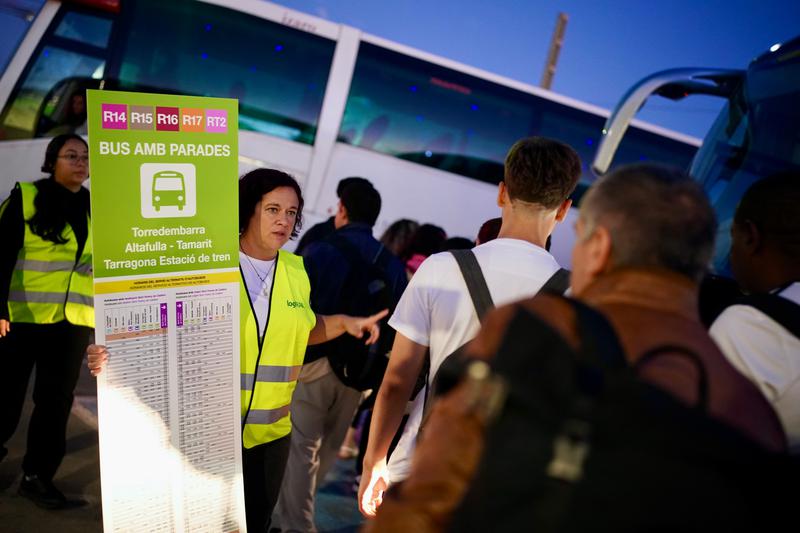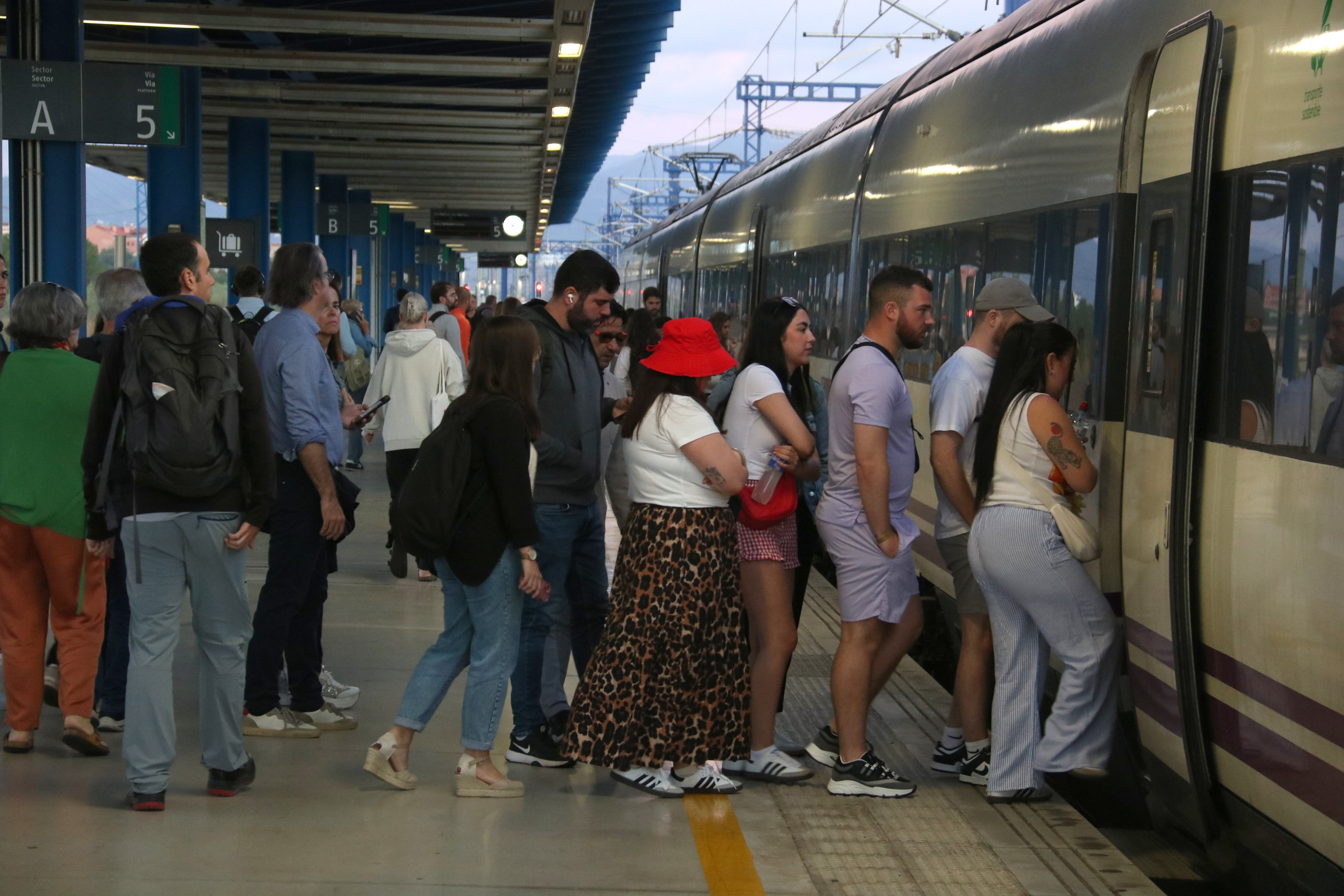No major incidents on first day of 'historic' Rodalies train disruption
Thousands affected by suspension of six Barcelona-Tarragona lines reach their destinations with minor delays

The first day of the six-month-long disruption of the Rodalies train lines between Barcelona and Tarragona began on Tuesday, with thousands finding alternative routes.
In the early morning in Sant Vicenç de Calders, the heart of the disruption, there were passengers running, faces in a bad mood, and a large number of buses.
For the next six months, this will be the normality for the 30,000 passengers that usually take the six lines between Tarragona and Sant Vicenç de Calders that are suspended.
"It's hell," some users who have experienced delays of more than 20 minutes told the Catalan News Agency (ACN).

However, the bus replacement service, the largest that Renfe has ever launched with more than 600 daily replacement bus trips, has not seen major incidents.
"I'm going to Barcelona airport and I left five hours early so I wouldn't miss my flight," said Juan, a resident of Tarragona.
Although the buses leaving Tarragona as an alternative service were full on Tuesday morning, there were no notable incidents.
"We hope that the service does not get worse during the day," said Ana Gómez, spokeswoman for the Dignitat a les Vies platform.

Other users from the Ebre region, the southernmost part of Catalonia, have even more difficulty reaching their destinations.
"I will reduce my trips to Barcelona," said Pilar, a resident of Hospitalet de l'Infant, in the south of Tarragona.
Like her, many, especially from the Ebre region, the southernmost part of Catalonia, are thinking of changing their routines to reduce their trips to the Catalan capital.
Others have opted to use the high-speed trains that run from the Camp de Tarragona station to Barcelona. On Tuesday morning, the number of passengers was higher than usual.

Rodalies said it would make "small adjustments" to improve the alternative transportation plan, with the goal of getting users to their destinations more efficiently and better synchronizing buses.
"We apologize for the disruption to people's mobility, but it is part of a historic investment by the Spanish government," said Rodalies director Antonio Carmona.
The Rodalies chief acknowledged some "occasional problems" and adjustments between buses and trains, but stressed that road transport is "more complicated".
The government also took a positive view of the first day of disruption. "There was no chaos," said mobility secretary Manel Nadal.
"Things worked reasonably well. We will improve the service day by day. Some citizens will complain and we apologize, but the work is very necessary," he said.